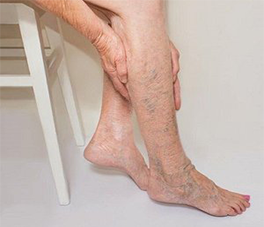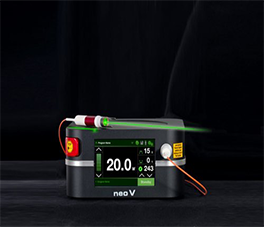Hyper Baric Oxygen Therapy


Hyperbaric oxygen therapy involves exposing the body to 100% oxygen at a pressure that is greater than normal. . Wounds need oxygen to heal properly. Exposing a wound to 100% oxygen may speed healing.
Hyperbaric oxygen therapy can be done in a number of ways. It can be given in a special type of room called a hyperbaric oxygen chamber. In this setting, you are completely immersed in 100% oxygen delivered at high pressure.
Hyperbaric oxygen therapy is used for certain types of wounds. Some of these are:
Radiation injuries
Infections
Burns
Certain skin grafts and flaps
Crush injuries
Diabetes related wounds
Ask your Surgeon if hyperbaric oxygen therapy is right for your condition.
Side effects of hyperbaric oxygen therapy are rare but include:
Pressure-related injury to your ears or nose
Nearsightedness (this usually resolves within days to weeks after the last treatment)
Seizures
Decompression sickness
Collapsed lung
Low blood sugar
A few people with severe congestive heart failure have had other problems with heart function after hyperbaric oxygen therapy. Share your complete medical history with your provider to make certain this treatment is safe for you.

Some facilities have a large hyperbaric oxygen chamber that can treat up to a dozen people at a time. But most hospitals have what is known as a monoplace. This is equipment for just one person.
Here is what usually happens during a hyperbaric oxygen therapy session:
You will likely be asked to remove your clothing and wear a medical gown that is 100% cotton. Don't take anything else into the chamber.
You will lie on a table that slides into the monoplace. This is a clear plastic tube that’s about 7-feet long.
You will be asked to relax and breathe normally during the procedure. You can watch TV or listen to music.
You will be able to talk to the therapist at any time during the treatment. The therapist can see you and talk to you at all times
The chamber will be sealed and then filled with pressurized oxygen.
The pressure will rise to 2.5 times the normal air pressure. Your ears may pop You may also have mild discomfort. This is normal.
The session will last anywhere from 30 minutes to 2 hours.
After the therapy, technicians will slowly depressurize the chamber.

Once your session is complete, you may feel lightheaded or tired. These symptoms will usually go away after a short period of time.
The number of treatments you need depends on the extent of your wound and how well the wound responds to therapy.

In Delhi, the treatment is done as sessions and you have to undergo the treatment only in designated medical centres. There are only a handful of hospitals that offers portable oxygen therapy at home and work. The sessions can range from INR 2500 to INR 4000 per session.
Chronic wounds require multiple sessions for good healing to commence. On an average small to medium wounds require 10-15 sessions. Larger wounds may require upto 20-30 sessions coupled with other supportive treatment for good healing.